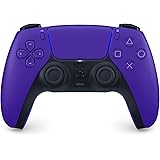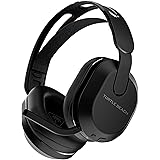Elevating Your Gaming Audio: Why IEMs Are a Game Changer for PC Gamers
For many PC gamers and builders, optimizing the visual components of a setup takes center stage, often leaving audio quality as an overlooked, yet critical, element. As highlighted in the video above, a significant number of enthusiasts might even be surprised by how much they’re missing out on. When it comes to truly immersive and competitive gaming, subpar audio can severely hinder your experience, potentially putting you at a disadvantage.
Indeed, the presenter’s honest admission about not knowing what “IEM” stood for resonates with a common sentiment among gamers. However, the world of high-fidelity audio offers a powerful solution that many audiophiles and professional gamers have embraced for years: In-Ear Monitors, or IEMs. These compact powerhouses are rapidly gaining traction as a superior alternative to traditional gaming headsets, promising a transformative audio journey.
Understanding In-Ear Monitors (IEMs) for Gaming
In-Ear Monitors (IEMs) are precision audio devices originally designed for musicians and audio engineers to provide accurate sound reproduction during live performances and studio sessions. Unlike typical earbuds, IEMs feature advanced driver technologies and are engineered to fit snugly within the ear canal, creating a seal that offers passive noise isolation.
This design fundamentally differentiates them from standard earbuds and bulky over-ear gaming headsets. Consequently, IEMs offer a listening experience that can dramatically improve spatial awareness and sound clarity in games. Many gamers are discovering that their compact form factor belies an incredibly powerful auditory punch, making them ideal for the discerning player.
The Unrivaled Soundstage and Positional Accuracy
A key advantage of using **IEMs for gaming** lies in their exceptional soundstage. Soundstage refers to the perceived three-dimensional space where sounds are positioned, giving you a sense of direction and distance for in-game audio cues. Traditional gaming headsets, while convenient, often struggle to replicate this vastness, frequently delivering a more “closed-in” or “two-dimensional” sound.
Research consistently demonstrates that precise spatial audio cues can significantly reduce reaction times in fast-paced competitive games. With IEMs, footsteps, distant gunshots, enemy ability activations, and even the subtle rustle of leaves become distinctly identifiable, allowing players to pinpoint threats and opportunities with greater accuracy. This superior positional audio translates directly into a tangible competitive edge.
Superior Comfort for Extended Gaming Sessions
Another crucial benefit, especially for “degenerate gamers” who spend hours immersed in virtual worlds, is the comfort offered by IEMs. As the video mentions, most people can wear them for longer periods compared to traditional headsets. Heavy over-ear headsets often exert clamping force on the head and ears, leading to discomfort, fatigue, and sweating over extended use.
In contrast, IEMs are remarkably lightweight and designed for a secure, ergonomic fit within the ear. They often come with a variety of ear tip sizes and materials, allowing users to find a customized fit that minimizes pressure points and ensures long-term comfort. This allows gamers to maintain focus and enjoy their sessions without the physical distractions associated with bulky audio gear.
Unparalleled Audio Fidelity and Clarity
Beyond soundstage and comfort, **IEMs for gaming** excel in delivering exceptional audio fidelity and clarity across the entire frequency spectrum. Many IEMs utilize sophisticated driver configurations, such as dynamic drivers, balanced armatures, or hybrid setups, each contributing to a nuanced and detailed sound profile. These drivers are engineered to reproduce sound with incredible precision, ensuring that every high, mid, and low frequency is rendered accurately.
Professional esports players frequently prioritize detailed audio reproduction, citing its profound impact on situational awareness. The clarity offered by IEMs means that subtle environmental sounds, distinct weapon fire, and critical voice communications are heard with pristine accuracy, free from the muddiness or artificial enhancements sometimes found in consumer-grade gaming headsets. This enhanced clarity empowers gamers to react swiftly and decisively.
Cost-Effectiveness and Exceptional Value
One of the most compelling arguments for adopting **IEMs for gaming** is their incredible price-to-performance ratio. As highlighted in the video, specific models like the Truthear Zero IEMs (V1 Blues) are widely lauded for offering “the best audio you can get for $50.” This affordability often shocks those accustomed to the higher price tags of premium gaming headsets, which can cost hundreds of dollars for comparable, or often inferior, audio quality.
Consequently, gamers can achieve audiophile-grade sound without breaking the bank. Many entry-level and mid-range IEMs deliver sound quality that surpasses even high-end gaming headsets, making them a savvy investment for budget-conscious players seeking a significant audio upgrade. Furthermore, their durable construction and often modular cables contribute to a longer lifespan, offering excellent long-term value.
Integrating IEMs into Your PC Gaming Setup
Adopting IEMs into your existing PC gaming setup is a straightforward process. Most IEMs connect via a standard 3.5mm jack, compatible with virtually all modern motherboards and gaming laptops. While some audiophiles might opt for a Digital-to-Analog Converter (DAC) and amplifier for an even more refined sound, this is generally not a prerequisite for most gamers to experience a substantial upgrade.
Given that most IEMs do not feature an integrated microphone, pairing them with a quality external microphone (such as a standalone USB mic or a dedicated condenser mic) is a common and highly effective solution. This setup allows for superior voice clarity during team communication, preventing the common pitfalls of mediocre built-in headset microphones. Gamers can then fine-tune their audio settings through their PC’s sound control panel or dedicated gaming software to optimize for specific game genres, though the inherent quality of IEMs often necessitates minimal equalization.









